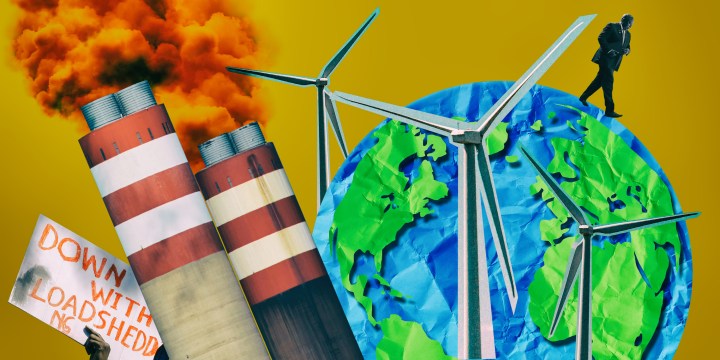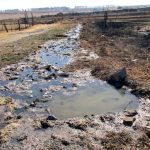ELECTRICITY BLUEPRINT
Presidential Climate Commission calls for plan that ‘maximises renewable energy’

In a webinar on Thursday, the Presidential Climate Commission outlined some of its recommendations for electricity planning as Minister Gwede Mantashe and the Department of Mineral Resources and Energy work on updating South Africa’s electricity blueprint — the Integrated Resource Plan.
The Presidential Climate Commission (PCC) — a multistakeholder body established by President Cyril Ramaphosa to “oversee and facilitate a just and equitable transition towards a low-emissions and climate-resilient economy” — is recommending that the country’s long-term energy plan “maximises renewable energy”.
It made the announcement in a webinar on Thursday in which the commission shared some of its recommendations for electricity planning and for the shape that the updated Integrated Resource Plan (IRP) should take.
The IRP — South Africa’s energy blueprint — is a long-term electricity infrastructure plan developed by the Department of Mineral Resources and Energy (DMRE). Its purpose is to guide the development of the country’s energy mix and ensure a reliable, secure and sustainable supply of electricity.
Read more in Daily Maverick: Big black holes emerge in South Africa’s Integrated Resource Plan for Electricity — coal is not the answer
The plan outlines the government’s strategy for meeting the country’s electricity demand and diversifying the energy sources used for power generation, taking into consideration various factors such as projected electricity demand, available energy resources, environmental concerns and socioeconomic objectives.
The PCC, on its website, states that its analysis and recommendations are based on “significant research, evidence, and stakeholder engagement with all social partners, and [are] set against the current national policy framework, notably the National Development Plan, the Just Transition Framework, and South Africa’s climate commitments (the NDC).”
Read more in Daily Maverick: Six key considerations underpinning South Africa’s nascent ‘just transition’ plan
In the webinar on Thursday, Lebogang Mulaisi, the head of policy at Cosatu and one of the PCC commissioners, laid out the commission’s recommendations and the context.
Least-cost mix
“A clear plan for electricity in the short and long term can give our people hope, attract investment, bolster trade, reduce death and health impacts for poor air quality, avail water for agriculture, make a decisive contribution to meeting South Africa’s carbon emission goals and ultimately boost the economy and create jobs.”
Mulaisi said, “Commissioners proposed an IRP that maximises renewable energy available on the grid. Regardless of assumptions made, the models analysed all select renewables, storage and peaking support as the optimal distribution of investment. This least-cost mix should therefore be the basis for any IRP scenarios.
“If we adopt ambitious and clear goals in line with our development and just transition objectives, assuming high economic growth and ambition at the lower end of the national determined contributions, the PCC expects a policy-adjusted IRP to promote approximately 50 to 60 gigawatts of variable renewable energy by 2030 supported by storage and between three and five gigawatts of peaking support.”
But what about nuclear and other technologies?
The report detailing the recommendations says: “All models conclude that, even if no climate restrictions are put in place, a least-cost electricity system comprises variable renewable energy (wind and solar), storage (batteries and pumped hydro) and peaking support (typically, but not necessarily, gas). None of the models, including the IRP 2019 least-cost scenario, build new coal or nuclear, even though these are technology options within the models. This is because these technologies are not the least-cost options.”
It continues: “Some stakeholders suggest that more fossil fuels are needed to ensure reliable supply, and some suggest that the transition to Net Zero emissions in the electricity sector must be accelerated. In South Africa, this debate centres primarily around coal, nuclear and gas. Inclusion of both in the electricity mix causes an increase in electricity costs, to varying degrees.”
Read more in Daily Maverick: Extending life of ageing coal-fired stations – anti-renewables policy incoherence could cost trillions
Mulaisi explained that the PCC was of the view that the IRP should be updated more frequently in line with a dynamic energy market and a rapidly warming planet.
Commissioners, she explained, “recommend a more spatial approach to electricity planning. Electricity planning is moving at a very fast pace so modelling needs to be repeated often. The IRP must be updated every two years in order to be in line with these electricity plans.
Climate change
“South Africa is in an electricity crisis. In the short term, we must select technologies that are least-cost, widely known and quickest to get on to the grid. This means renewable energy backed by storage and peaking support. Regardless of 2030 views, we should be aiming for a rate of six to eight gigawatts a year in the short term.
“We should also keep in mind the requirements of climate change. The latest IPCC assessment reports suggest that in order to give us a 50% chance of staying below 1.5 degrees of warming, we need to decarbonise the power, including the electricity system, by the early 2040s. This means no fossil fuels-based power anywhere in the world after 2042.”
Read more in Daily Maverick: AR6 synthesis report: Warming above 1.5℃ is likely in the near term unless the world acts now, says the UN
The report detailing these recommendations addresses this reality in the South African context too.
“Air pollution from coal-fired power plants, when considering Eskom’s current planned retirement schedule and emission control retrofits, would be responsible for 79,500 air pollution-related deaths from 2025 until their end-of-life,” it reads.
The report also notes that “accelerating the phasing-out or reducing the output of coal has positive climate, environmental and human health benefits, but puts jobs and livelihoods at risk. Policymakers must weigh up both sides of the debate and make choices that, given uncertainty, are not without risk.
“Returning to the role of electricity in development affirms how important these decisions are. More expensive electricity puts a drag on economic development and can lead to unjust outcomes. Negative outcomes are worse, in particular, for the poor.”
In making these recommendations, the commission says it has reviewed several local and international studies that consider climate-compatible electricity sector pathways. The “balance of evidence”, it found, is in favour of:
- “No new coal, and managed coal closure at end of economic life.
- Renewable dominant energy systems are least-cost (and are becoming increasingly cheaper over time). Variable Renewable Energy systems are shown to be as secure and reliable as traditional fossil fuel-based systems.
- The benefits of access to international trade and finance, increased geopolitical influence, reduced health effects from improved air quality, and of course, relatively lower impacts from climate change when achieved, mitigate and compensate for risks associated with the transition and suggest that South Africa should investigate accelerated transitions under stricter carbon budgets.” DM





















That old saying ‘the darkest hour is just before dawn’ could go along with Ferial’s light at the end of the tunnel. While we’ve been disappointed too many times by this useless kakistocracy (see kfm’s tiktok on that ancient Greek word) of a government, maybe the lights have actually gone on in their brains and things are on the upturn. We can only hope.
As a solar generator with excess generating potential, I would like to know what is happening about feed-in tariffs. It must be about a year ago that the President instructed NERSA make them compulsory.
Since then I have heard nothing. What is the status?
While I accept my contribution will only be a few kWh on a sunny day, when multiplied by all the households and businesses in the country, a noticeable degree on misery would be avoided.